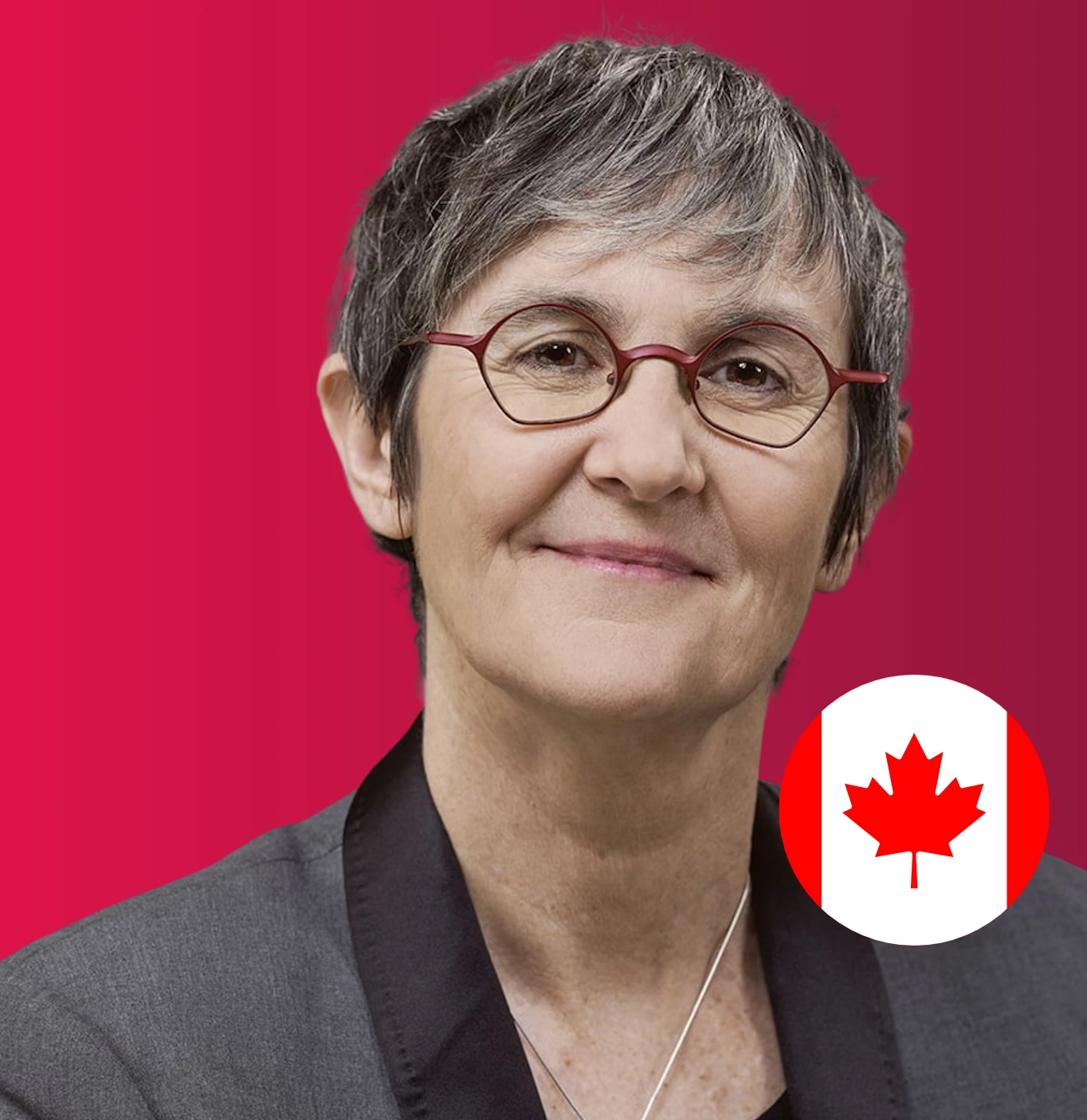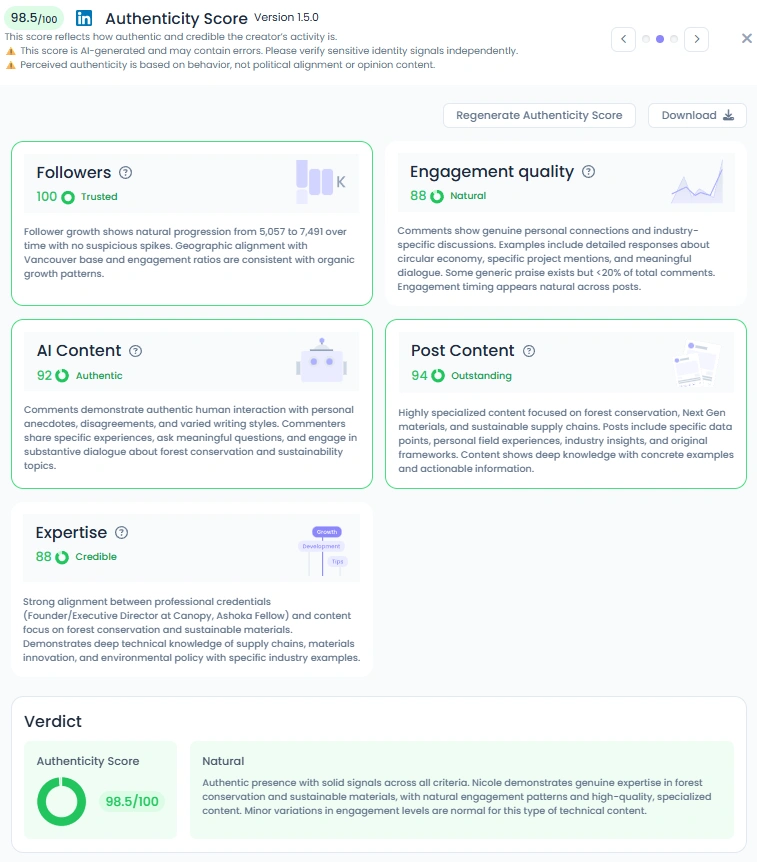Blog & Articles
Your ultimate ressource for the creator economy
Methodology & Rankings
About Favikon, rankings, tools & much more.
Insights
The recipe behind Favikon's viral & coveted rankings.
Free tools to power your influencer marketing workflows.
See Favikon users' success stories.
Get access to all Favikon rankings.
Become a Partner
Become an Affiliate
About the team behind Favikon
The place to talk creator economy, together


Featured Rankings

Here is the Top 50 Rising Video Creators on LinkedIn. Video is quickly becoming the platform’s most powerful format, with creators gaining more reach and engagement than ever. As Gen Z grows its presence and tools like BrandLink and Thought Leader Ads support content creation, LinkedIn is doubling down on video. This ranking, made in partnership with OpusClip, celebrates the creators leading this shift and aims to inspire anyone ready to start sharing through video.

Here is the Top 50 Rising Video Creators on LinkedIn. Video is quickly becoming the platform’s most powerful format, with creators gaining more reach and engagement than ever. As Gen Z grows its presence and tools like BrandLink and Thought Leader Ads support content creation, LinkedIn is doubling down on video. This ranking, made in partnership with OpusClip, celebrates the creators leading this shift and aims to inspire anyone ready to start sharing through video.
Who is Nicole Rycroft?
Nicole Rycroft builds bridges between big fashion and nature. She speaks with clarity, data, and fierce care for forests.

.png)

Elena Freeman designs partnerships and events at Favikon. She cares about building spaces where creators, brands, and ideas meet in ways that feel real and memorable. From partner programs to community gatherings, she focuses on making connections that spark collaboration and professional growth.
Check Brand Deals
Nicole Rycroft: The conservation strategist who makes forests central to fashion
Nicole Rycroft builds bridges between big fashion and nature. She speaks with clarity, data, and fierce care for forests. Her work turns supply-chain complexity into concrete tools for brands to reduce harm. She is both a field scientist and a policy-savvy connector, and people listen because she produces results.
1. Who she is
Nicole is the Founder and Executive Director of Canopy, a nonprofit that pushes global fashion and paper supply chains to protect forests and conserve biodiversity. She started by spotlighting endangered forests and now runs programs that shift major buyers away from risky wood-and-pulp sources. Nicole blends field experience, policy advocacy, and corporate engagement to create practical market solutions. Her team produces research, scorecards, and procurement tools that large brands actually use. Over the years she has guided collaborations with companies and governments to adopt forest-friendly sourcing and alternative fiber strategies. That mix of scientific rigor and pragmatic advocacy positions her as a leading voice on circular materials and forest protection.
2. A Network of Heavyweights
Nicole’s network reads like a who’s who of sustainability and industry: global NGOs, the UN, IUCN, the World Economic Forum, major fashion groups, and fiber innovators such as Lenzing and Inditex. She convenes textile leaders, material scientists, and policy makers to align purchasing power with conservation outcomes. That cross-sector reach gives her arguments both credibility and leverage.

3. Why people listen

People pay attention because Nicole combines evidence with clear next steps. She frames big problems in supply chains and then shows brands how to change purchasing, certify alternatives, and track impact. Her posts mix field photos, hard numbers, and direct asks that invite partnership. She is unafraid to call out bad practices while offering realistic solutions, which earns trust from both buyers and activists.
4. Authenticity that resonates

Favikon scores Nicole 98.5 out of 100 for authenticity. Her content reads as expert and human. She shares field trips, campaign wins, and candid reflections on policy progress. Comments on her posts show substantive engagement, including technical questions and collaborative ideas. That level of transparency makes her authority feel grounded and earned.
5. Numbers that back it up

Nicole’s follower base shows steady organic growth from about 5,057 to 7,491 over time. Her Influence Score sits at 7 with roughly 4,868 points, reflecting strong sector influence. Engagement quality is high at 88, and post content scores 94 for depth and usefulness. She posts research highlights, campaign milestones, and field updates on a consistent rhythm that attracts meaningful professional interaction.
6. Collaborations that matter
Nicole’s work includes partnerships with major retailers, fiber producers, conservation organizations, and international bodies. Canopy’s tools and scorecards are used in procurement conversations and in industry coalitions pushing for lower-impact materials. She also collaborates on research projects that develop next-gen fibers and circular design practices.
7. Why brands should partner with Nicole Rycroft
Nicole helps brands move from commitment to measurable action.
- Joint supply-chain audits and roadmaps for sourcing deforestation-free materials
- Co-developed pilot projects for alternative fiber adoption and recycling loops
- Thought leadership campaigns that translate technical findings into consumer trust signals
- Training programs for procurement teams to embed forest protection in buying decisions
8. What causes she defends

Nicole is a clear advocate for climate action through forest protection. She focuses on keeping intact forests out of supply chains and on accelerating sustainable material alternatives. Her posts highlight field evidence, policy wins, and practical procurement changes that reduce emissions and biodiversity loss. She frames conservation as both an ethical imperative and a solvable supply-chain challenge.
9. Why Nicole Rycroft is relevant in 2026
As brands face rising regulatory scrutiny and consumer demand for verifiable climate action, Nicole’s expertise sits at the intersection of risk mitigation and opportunity. She translates complex material supply risks into procurement policies that reduce emissions and protect habitats. With circularity and alternative fibers moving from niche to mainstream, her ability to convene buyers and innovators will be essential for credible, scalable transitions.
Conclusion: Forests First
Nicole brings technical depth, strategic influence, and a do-able playbook to an urgent global problem. She turns academic insight into market tools and mobilizes buyers to protect nature at scale. For brands and institutions that need credible pathways to reduce forest impact, Nicole is a practical, principled partner. Her work shifts markets in ways that matter for climate and biodiversity.
Related Articles
See all the articlesResources










.png)






